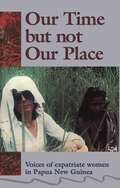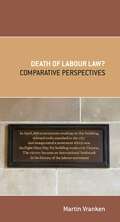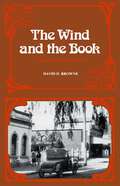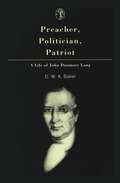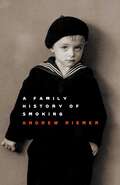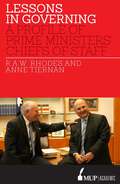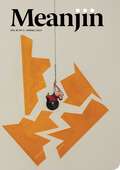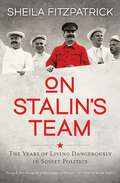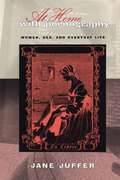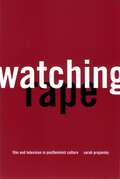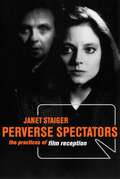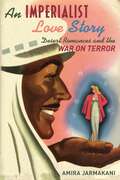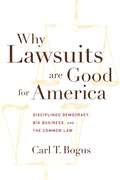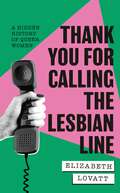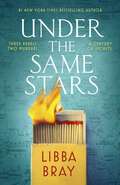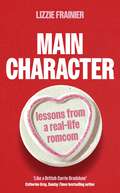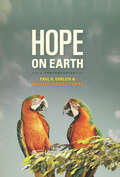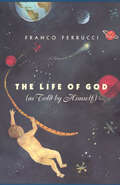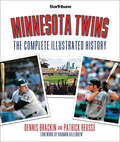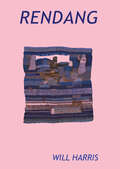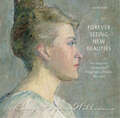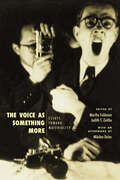- Table View
- List View
Our Time But Not Our Place: Voices of expatriate women in Papua New Guinea
by Myra Jean Bourke Susanne Holz Kathy Kituai Linda RoachOver the years thousands of women, mostly Australians, have lived as expatriates in Papua New Guinea. We went there at different points in our lives and for a variety of reasons. Some of us were keen to go; we were looking for adventure in exotic surroundings, seeking our fortunes, changing jobs, running away from unhappy situations, furthering our professional or academic interests. Many of us were motivated to go to a developing country to 'do good'. Others went because their partners or their parents had an ambition, an obsession or a contract. All have stories to tell.So begins Our Time But Not Our Place in which 31 women tell us of their experiences of Papua New Guinea. Their voices are as diverse as the encounters they describe; their stories span the time between 1930 and 1990; together their responses challenge commonly held views of the expatriate condition.
Death of Labour Law?
by Martin VrankenDeath of Labour Law? questions the on-going relevance of labour law in Australia and other Western industrialised societies in the twenty-first century. The tension between economic flexibility for business and social stability for workers is set against the backdrop of the Rudd government's 'Forward with Fairness' reform agenda and similar proposals for change in the European Union. Martin Vranken retraces the birth and subsequent growth of labour law and argues that it is essentially a mechanism for employee protection, not labour market regulation. Death of Labour Law? offers a fresh perspective on the current debate about labour law and the role of the state in Australian industrial and workplace relations.
Wind and the Book: Memoirs of a Country Doctor
by David D. BrowneThis is the story of a general practitioner and his patients. The scene is Victoria in the mid-twentieth century. Many of the changes which revolutionized—medicine, antibiotics, immunization and blood transfusions—were yet to be made. Conditions were hard, transportation primitive and hospital facilities scarce. The innovating doctor met a public that was often cautious and suspicious, if not actively hostile. In these circumstances Dr Browne struggled for better health care in three country areas. He built his own hospital at Cobden. He campaigned for the immunization of children against diphtheria. Under shocking conditions he carried out one of the earliest blood tranfusions in Victoria. For fifty-three years he worked with imagination, compassion and dedication to improve the health of his patients. At a time when general practice was threatened by the rush to specialization. Dr Browne's memoirs are not simply fascinating; they are a warning of the danger of our losing the personal relationship and commitment which has characterized general practice in the past.
Preacher, Politician, Patriot: A Life of John Dunmore Lang
by Don BakerJohn Dunmore Lang had a finger in most pies in colonial New South Wales. He arrived in 1823, a young Presbyterian minister in search of a pulpit. Fifty years later his funeral befitted a founding father not only of the Presbyterian Church in Australia but of the nation itself. He established the Scots Church and his own secondary school, the Australian College. He was a populist politician whose republican and democrat leanings strengthened during a quarter-century in the Legislative Council. He ran three newspapers. He circled the globe eight times; one of his many missions was to recruit clerics, along with respectable tradesmen and small farmers from the British Isles—anywhere but Papist Ireland. He wrote a book or two during most voyages. And that is not the half of it. Volatile and vindictive, Lang loved a fight, answered only to God and was never still. Towards the end of a life peppered with church rifts, he was locked out of the very church he had built. The financial dealings of this fierce preacher of moral rectitude were labyrinthine and shady. They twice landed him in gaol—as did a willingness to libel opponents. Yet he was a hero to ordinary workers and a perceptive critic of the treatment of Aboriginal people. Lang is a problematic giant from our colonial past. Don Baker, his cool, authoritative, gently ironic biographer, considers him 'almost as large a figure as he claimed to be'.
Family History Of Smoking
by Andrew RiemerA Family History of Smoking is a compelling memoir about two European families living through the last gasps of the Austro-Hungarian Empire. From great-grandfather David, who saw his family's fortunes decline with the gradual rise of anti-Semitism, to the ultra-modern, glamorous mother who held her family together through World War II, Andrew Riemer paints a beautiful portrait of a now vanished world that literally went up in smoke.Set against the backdrop of the tumult of early twentieth-century Europe, A Family History of Smoking is full of eccentric characters, literary anecdotes and historical drama, and is a moving tribute to a family, its strength and its stories.
Lessons in Governing: A Profile of Prime Ministers' Chiefs of Staff
by R.A.W. Rhodes Anne TiernanLessons in Governing is a unique contribution to the study of Australian policy, politics and government institutions. It examines the position of Chief of Staff to the Australian Prime Minister from the perspective of key individuals who have held it. Exploring the support needs of Australian political leaders, it traces the forces that have shaped the growth and specialisation of the Prime Minister's Office since Gough Whitlam first formalised the appointment of a trusted senior person as head of his private office in 1972. Individuals in successive PMOs have long been recognised as key players, but their role has come under greater scrutiny as the link between prime ministerial effectiveness and the performance of their private offices has become more widely understood. While insights and advice have been passed from one incumbent to the next, there has been no systematic attempt to understand and document the evolution of the chief-of-staff position. Lessons in Governing addresses this critical gap in our understanding of the contemporary practice of Australian political leadership, reporting the findings of a project designed to develop an empirically informed understanding of the role of prime ministerial chiefs of staff as seen by those who held the post.
Meanjin Vol 82, No 3
by Meanjin QuarterlyGuest-Edited by Bridget Caldwell-Bright and Eugenia Flynn, Meanjin 82.3 Spring 2023 is the first edition in the venerable journal's 83-year history to be devoted entirely to the work of Aboriginal and Torres Strait Islander writers and artists. The Meanjin Paper that opens this special edition is an archival interview with Oodgeroo Noonuccal, followed by a State of the Nation piece by Gary Foley, and an interview with Ali Cobby-Eckermann. There are essays by Gregory Phillips, Tristen Harwood, Apryl Day, Celeste Liddle and Davina B Woods; fiction by Tony Birch, Melanie Saward, Jeanine Leane and Jasmin McGaughey; memoir by Anna Wommatakimmi, Rosa Flynn-Smith and Phillip Bell; critical culture pieces by Ali Gumillya Baker, Paola Balla and Philip Morrissey; experimental work by Paul Collis and Wayne Knight (with Jen Crawford and Paul Magee). There's also poetry by Jim Everett, Maria van Neerven, Maya Hodge, Sam Faulkner, Susie Anderson, Samuel Wagan Watson, Graham Akhurst, Lulu Houdini and Boo Badley, Ellen van Neerven, and Melissa Stannard. And finally, this edition's The Year In... piece is by Wesley Enoch. This edition of Meanjin is available for online order at a discounted rate for Aboriginal and Torres Strait Islander readers only. Apply the code MOBPRICE at checkout.
Letters to a Critic: Alan McCulloch's World of Art
by Rodney JamesDescribed as 'arguably the most influential Australian art critic of the last half of the twentieth century', Alan McCulloch's work-as illustrator, critic, gallery director and author-reflected on and documented much of this era of visual art in Australia. As critic for the Melbourne Herald from 1951 to 1982 McCulloch was fundamental in the nascent careers of those who were to become some of Australia's most famous artists. His monumental Encyclopedia of Australia Art, first published in 1968 and still in print today, has been acknowledged as the 'single most important reference work on Australian art ever published'. In Letters to a Critic curator and author Rodney James has mined the rich archival treasure of the McCulloch Papers to create a lively combination of biography and illustrated book of letters. Witty, irreverent, profound and heartfelt these previously unpublished letters, critical essays, illustrations and works of art provide a unique insight into the art and lives of Australia's most famed art personalities as they simultaneously reveal McCulloch's role as critic, gallery director and mentor.
On Stalin's Team: The Years of Living Dangerously in Soviet Politics
by Sheila FitzpatrickJoseph Stalin was the unchallenged dictator of the Soviet Union for so long that most historians have dismissed the officials surrounding him as mere yes-men. On Stalin's Team overturns this view, revealing that behind Stalin were a dozen or so loyal and competent men who formed a remarkably effective team from the late 1920s until his death in 1953, when they accomplished a brilliant transition as a reforming 'collective leadership'. Drawing on extensive original research, Sheila Fitzpatrick provides the first in-depth account of Stalin's dedicated comrades-in-arms, who not only worked closely with their leader, but constituted his social circle. Key team members were Stalin's number-two man, Molotov; the military leader Voroshilov, the charismatic and entrepreneurial Ordzhonikidze; the wily security chief Beria; and the deceptively simple Khrushchev, who finally disbanded the team in 1957 to become sole leader of the Soviet Union.
Elijah Muhammad and Islam
by Herbert BergElijah Muhammad is arguably the most significant figure in the history of Islam in the United States. Successor to W. D. Fard, the founder of the Nation of Islam, and a mentor to Malcolm X, Elijah Muhammad led the Nation of Islam for over forty years.In Elijah Muhammad and Islam, Herbert Berg focuses on Elijah Muhammad's religiosity, which is frequently brought into question as the authenticity of the Nation of Islam as "truly Islamic" remains hotly debated. To better comprehend this powerful and controversial figure, Berg contextualizes Elijah Muhammad and his religious approach within the larger Islamic tradition, exploring his use of the Qur’an, his interpretation of Islam, and his relationships with other Muslims. Above all, Berg seeks to understand—not define or label—Muhammad as a Muslim. To do otherwise, he argues, is to misunderstand and distort the man, his teachings, his movement, and his legacy.
At Home with Pornography: Women, Sexuality, and Everyday Life
by Jane JufferTwenty-five years after the start of the feminist sex wars, pornography remains a flashpoint issue, with feminists locked in a familiar argument: Are women victims or agents? In At Home with Pornography, Jane Juffer exposes the fruitlessness of this debate and suggests that it has prevented us from realizing women's changing relationship to erotica and porn. Over the course of these same twenty-five years, there has been a proliferation of sexually explicit materials geared toward women, made available in increasingly mainstream venues. In asking "what is the relationship of women to pornography?" Juffer maintains that we need to stop obsessing over pornography's transgressive aspects, and start focusing on the place of porn and erotica in women's everyday lives. Where, she asks, do women routinely find it, for how much, and how is it circulated and consumed within the home? How is this circulation and consumption shaped by the different marketing categories that attempt to distinguish erotica from porn, such as women's literary erotica and sexual self-help videos for couples? At Home with Pornography responds to these questions by viewing women's erotica within the context of governmental regulation that attempts to counterpose a "dangerous" pornography with the sanctity of the home. Juffer explorers how women's consumption of erotica and porn for their own pleasure can be empowering, while still acting to reinforce conservative ideals. She shows how, for instance, the Victoria's Secret catalog is able to function as a kind of pornography whose circulation is facilitated both by its reliance on Victorian themes of secrecy and privacy and on its appeals to the selfish pleasures of modern career women. In her pursuit to understand what women like and how they get it, Juffer delves into adult cable channels, erotic literary anthologies, sex therapy guides, cyberporn, masturbation, and sex toys, showing the varying degrees to which these materials have been domesticated for home consumption. Representing the next generation of scholarship on pornography, At Home with Pornography will transform our understanding of women's everyday sexuality.
Watching Rape: Film and Television in Postfeminist Culture
by Sarah ProjanskyLooking at popular culture from 1980 to the present, feminism appears to be "over": that is, according to popular critics we are in an era of "postfeminism" in which feminism has supposedly already achieved equality for women. Not so, says Sarah Projansky. In Watching Rape, Projansky undermines this complacent view in her fascinating and thorough analysis of depictions of rape in U.S. film, television, and independent video. Through a cultural studies analysis of such films as Thelma and Louise, Daughters of the Dust, and She's Gotta Have It, and television shows like ER, Ally McBeal, Beverly Hills 90210, and various made-for-tv movies, Projansky challenges us to see popular culture as a part of our everyday lives and practices, and to view that culture critically. How have media defined rape and feminism differently over time? How do popular narratives about rape also communicate ideas about gender, race, class, nationality, and sexuality? And, what is the future of feminist politics, theory, and criticism with regard to issues of sexual violence, postfeminism, and popular media? The first study to address the relationship between rape and postfeminism, and one of the most detailed and thorough analyses of rape in 25 years, Watching Rape is a crucial contribution to contemporary feminism.
Perverse Spectators: The Practices of Film Reception
by Janet StaigerFilm and television have never been more prevalent or watched than they are now, yet we still have little understanding of how people process and make use of what they see. And though we acknowledge the enormous role the media plays in our culture, we have only a vague sense of how it actually influences our attitudes and desires. In Perverse Spectators, Janet Staiger argues that studying the interpretive methods of spectators within their historical contexts is both possible and necessary to understand the role media plays in culture and in our personal lives. This analytical approach is applied to topics such as depictions of violence, the role of ratings codes, the horror and suspense genre, historical accuracy in film, and sexual identities, and then demonstrated through works like JFK, The Silence of the Lambs, The Texas Chain Saw Massacre, Psycho, and A Clockwork Orange. Each chapter shows a different approach to reconstructing audience responses to films, consistently and ingeniously finding traces of what would otherwise appear to be unrecoverable information. Using vivid examples, charting key concepts, and offering useful syntheses of long-standing debates, Perverse Spectators constitutes a compelling case for a reconsideration of the assumptions about film reception which underlie contemporary scholarship in media studies. Taking on widely influential theories and scholars, Perverse Spectators is certain to spark controversy and help redefine the study of film as it enters the new millennium.
An Imperialist Love Story: Desert Romances and the War on Terror
by Amira JarmakaniA curious figure stalks the pages of a distinct subset of mass-market romance novels, aptly called “desert romances.” Animalistic yet sensitive, dark and attractive, the desert prince or sheikh emanates manliness and raw, sexual power. In the years since September 11, 2001, the sheikh character has steadily risen in popularity in romance novels, even while depictions of Arab masculinity as backward and violent in nature have dominated the cultural landscape. An Imperialist Love Story contributes to the broader conversation about the legacy of orientalist representations of Arabs in Western popular culture. Combining close readings of novels, discursive analysis of blogs and forums, and interviews with authors, Jarmakani explores popular investments in the war on terror by examining the collisions between fantasy and reality in desert romances. Focusing on issues of security, freedom, and liberal multiculturalism, she foregrounds the role that desire plays in contemporary formations of U.S. imperialism. Drawing on transnational feminist theory and cultural studies, An Imperialist Love Story offers a radical reinterpretation of the war on terror, demonstrating romance to be a powerful framework for understanding how it works, and how it perseveres.
Why Lawsuits are Good for America: Disciplined Democracy, Big Business, and the Common Law (Critical America #62)
by Carl T. BogusArgues that lawsuits work far better than commonly understoodJudging by the frequency with which it makes an appearance in television news shows and late night stand up routines, the frivolous lawsuit has become part and parcel of our national culture. A woman sues McDonald’s because she was scalded when she spilled her coffee. Thousands file lawsuits claiming they were injured by Agent Orange, silicone breast implants, or Bendectin although scientists report these substances do not cause the diseases in question. The United States, conventional wisdom has it, is a hyperlitigious society, propelled by avaricious lawyers, harebrained judges, and runaway juries. Lawsuits waste money and time and, moreover, many are simply groundless.Carl T. Bogus is not so sure. In Why Lawsuits Are Good for America, Bogus argues that common law works far better than commonly understood. Indeed, Bogus contends that while the system can and occasionally does produce “wrong” results, it is very difficult for it to make flatly irrational decisions. Blending history, theory, empirical data, and colorful case studies, Bogus explains why the common law, rather than being outdated, may be more necessary than ever. As Bogus sees it, the common law is an essential adjunct to governmental regulation—essential, in part, because it is not as easily manipulated by big business. Meanwhile, big business has launched an all out war on the common law. “Tort reform”—measures designed to make more difficult for individuals to sue corporations—one of the ten proposals in the Republican Contract With America, and George W. Bush’s first major initiative as Governor of Texas. And much of what we have come to believe about the system comes from a coordinated propaganda effort by big business and its allies. Bogus makes a compelling case for the necessity of safeguarding the system from current assaults. Why Lawsuits Are Good for America provides broad historical overviews of the development of American common law, torts, products liability, as well as fresh and provocative arguments about the role of the system of “disciplined democracy” in the twenty-first century.
Thank You For Calling the Lesbian Line: A Hidden History of Queer Women
by Elizabeth Lovatt'Deliciously informative and rigorously researched . . . I loved it.' Julia Bell, author of DIRTY WORKWith warmth and humour, Elizabeth Lovatt reimagines the women who both called and volunteered for the Lesbian Line in the 1990s, whilst also tracing her own journey from accidentally coming out to disastrous dates to finding her chosen family. With callers and agents alike dealing with first crushes and break-ups, sex and marriage, loneliness and illness (or simply the need to know the name of a gay bar on a night out), this is a celebration of the ordinary lives of queer women. Thank You for Calling the Lesbian Line is timely and vital exploration of how lesbian identity continues to remake and redefine itself in the 21st century, and where it might lead us in the future.
Under the Same Stars
by Libba Bray'Under the Same Stars will leave you shattered and wildly hopeful' E. Lockhart, author of We Were Liars and Genuine Fraud'Stirring and absolutely unforgettable' Samira Ahmed, New York Times-bestselling author of Internment and Hollow Fires'Full of banter, romance, humor and a little bit of magic' Gayle Forman, author of Not Nothing and After LifeFrom New York Times-bestselling author Libba Bray comes a propulsive historical mystery that examines truth, rebellion, reconciliation, and what must be sacrificed for a better world.It was said that if you write to the Bridegroom's Oak, the love of your life will answer back. Now, the tree is giving up its secrets at last.In 1940s Germany, Sophie is excited to discover a message waiting for her in the Bridegroom's Oak from a mysterious suitor. Meanwhile, her best friend, Hanna, is sending messages too―but not to find love. As World War II unfolds in their small town of Kleinwald, the oak may hold the key to resistance against the Nazis.In 1980s West Germany, American teen transplant Jenny feels suffocated by her strict parents and is struggling to fit in. Until she finds herself falling for Lena, a punk-rock girl hell-bent on tearing down the wall separating West Germany from East Germany, and meeting Frau Hermann, a kind old lady with secrets of her own.In Spring 2020, New York City, best friends Miles and Chloe are slogging through the last few months of senior year when an unexpected package from Chloe's grandmother leads them to investigate a cold case about two unidentified teenagers who went missing under the Bridegroom's Oak eighty years ago.
Main Character: Lessons from a Real-life Romcom
by Lizzie FrainierA SHEERLUXE READING LIST PICK FOR 2025 'Fans of Bridget Jones will love Lizzie Frainier's tales from the dating front line' Sunday Times Style'Lizzie Frainier is admirably frank and deeply likeable. She takes you along for the ride of her love life like a British Carrie Bradshaw' Catherine Gray, Sunday Times bestselling authorFrom Bridget Jones to Notting Hill ― do romcoms prepare us for the good, the bad and the disconcerting of dating? Many of us who grew up on a strict diet of romcoms know all about the perfect meet cute that turns into a head-over-heels relationship. So when Lizzie was offered the chance to take part in a The Holiday-style festive house swap for an article, she knew she had to say yes and just do it for the plot - oh, and the trip to New York. In romcoms you always meet your match, your one true love, your soulmate, but in reality things don't always end with a happily ever after. Or at least the one we expected. From falling for the emotionally unavailable 'cool boy' at school to receiving hideous dating app messages, and succumbing to the magnetic pull of a situationship to riding the incomparable high of an instant connection, Lizzie shares her experiences of the intensity of falling in love, the heartbreak of falling out of it and the friendships that have seen her through it all.Charting a decade of electric first dates, meaningful encounters and lessons learned along the way, Main Character is an open-hearted celebration of romcoms and to the many ways in which love can show up in our lives.
Hope on Earth: A Conversation
by Paul R. Ehrlich Michael Charles TobiasHope on Earth is the thought-provoking result of a lively and wide-ranging conversation between two of the world’s leading interdisciplinary environmental scientists: Paul R. Ehrlich, whose book The Population Bomb shook the world in 1968 (and continues to shake it), and Michael Charles Tobias, whose over 40 books and 150 films have been read and/or viewed throughout the world. Hope on Earth offers a rare opportunity to listen in as these deeply knowledgeable and highly creative thinkers offer their takes on the most pressing environmental concerns of the moment. Both Ehrlich and Tobias argue that we are on the verge of environmental catastrophe, as the human population continues to grow without restraint and without significant attempts to deal with overconsumption and the vast depletion of resources and climate problems it creates. Though their views are sympathetic, they differ in their approach and in some key moral stances, giving rise to a heated and engaging dialogue that opens up dozens of new avenues of exploration. They both believe that the impact of a human society on its environment is the direct result of its population size, and through their dialogue they break down the complex social problems that are wrapped up in this idea and attempts to overcome it, hitting firmly upon many controversial topics such as circumcision, religion, reproduction, abortion, animal rights, diet, and gun control. For Ehrlich and Tobias, ethics involve not only how we treat other people directly, but how we treat them and other organisms indirectly through our effects on the environment. University of California, Berkeley professor John Harte joins the duo for part of the conversation, and his substantial expertise on energy and climate change adds a crucial perspective to the discussion of the impact of population on global warming. This engaging and timely book invites readers into an intimate conversation with some of the most eminent voices in science as they offer a powerful and approachable argument that the ethical and scientific issues involved in solving our environmental crisis are deeply intertwined, while offering us an optimistic way forward. Hope on Earth is indeed a conversation we should all be having.
The Life of God (as Told by Himself)
by Franco Ferrucci“Blessed are the readers, for this tale of God’s long insomnia will keep them happily awake . . . An extraordinary story.” —Umberto Eco, international bestselling, award-winning authorAt the center of Franco Ferrucci’s inspired novel is a tender, troubled God. In the beginning is God’s solitude, and because God is lonely he creates the world. He falls in love with earth, plunges into the oceans, lives as plant and reptile and bird. His every thought and mood serve to populate the planet, with consequences that run away from him—sometimes delightfully, sometimes unfortunately.When a new arrival emerges from the apes, God believes he has finally found the companion he needs to help him make sense of his unruly creation. Yet, as the centuries pass, God feels more and more out of place in the world he has created; by the close of his memoir, he is packing his bags.Highly praised and widely reviewed, The Life of God is a playful, wondrous, and irresistible book, recounting thousands of years of religious and philosophical thought.“‘God’s only excuse is that he does not exist,’ wrote Stendhal, but now Franco Ferrucci has provided the Supreme Being with another sort of alibi.” —James Morrow, The Washington Post Book World“The Life of God is, in truth, the synthesis of a charming writer’s . . . expression of his boundless hopes for, and poignant disappointments in, his own human kind.” —Jack Miles, The New York Times Book Review“Rather endearing . . . This exceedingly amusing novel . . . is a continuous provocation and delight; there isn’t a dull page in it.” —Kirkus Reviews
Minnesota Twins: The Complete Illustrated History
by Dennis Brackin Patrick ReusseA treasury of Twin Cities baseball history packed with photos from the archives.Major League Baseball came to the Minnesota prairie in the spring of 1961, and ever since, the Minnesota Twins have held a cherished place in the hearts of sports fans throughout the region. With Hall of Famers like Harmon Killebrew, Rod Carew, and Kirby Puckett and beloved characters from Billy Martin to Kent Hrbek to Joe Mauer, the history of the Twins encompasses highs and lows, heroes and goats, but always nonstop excitement.Minnesota Twins: The Complete Illustrated History provides an in-depth and entertaining look at the team, its players, its stadiums, and the memorable moments through the years. Illustrated with photos from the Star Tribune’s archives, it is the ultimate celebration of a beloved franchise.
RENDANG (Wesleyan Poetry Series)
by Will HarrisA rising star British poet&’s debut collection is &“a playful and insightful exploration of contemporary notions of self and society&” (The Guardian). Using long poems, ekphrasis, and ruptured forms, RENDANG is a startling new take on the self, and how an identity is constructed. Drawing on his Anglo-Indonesian heritage, Will Harris shows us new ways to think about the contradictions of identity and cultural memory. He creates companions that speak to us in multiple languages. They deftly ask us to consider how and what we look at, as well as what we don't look at and why. It is intellectual and accessible, moving and experimental, and combines a linguistic innovation with a deep emotional rooting. &“Harris offers an urgent and moving exploration of cultural identity and legacy . . . made all the richer by its unique narrative structure and playful attention to sound.&” —Publishers Weekly &“A heartfelt reflection of how it feels to fall between different cultures, languages and places.&” ―i-D Magazine &“Brims with soul, acuity and playfulness.&” ―Financial Times &“It's the debut of the year.&” —Sunday Times &“RENDANG is a wonder, and we are lucky to have it.&” ―Poetry London &“Will Harris takes British poetry into new waters: RENDANG is an astonishing debut. . . . Many are heart-stopping: the kind of poem that makes you put down the book for a while just to breathe.&” ―Sarah Howe, winner of the T.S. Eliot Prize
Art Studio: More than 50 Projects and Techniques for Drawing and Painting Heads, Faces, and Features in Pencil, Acrylic, Watercolor, and More!
by Walter Foster Creative TeamAn introduction for beginning artists and art enthusiasts to methods of drawing and painting heads, faces, and expressions using a variety of mediums. Drawing and painting heads, faces, and expressions can be an intimidating prospect for a beginning artist. Art Studio: Faces & Features is here to help, with more than fifty tips, techniques, and step-by-step projects that will have you creating expressive faces and mastering textures in all your drawings. This intuitive guide shows you how to work with graphite and colored pencils; acrylic, oil, and watercolor paints; pastels; and even pen and ink. This range of mediums is the perfect way to experiment, build artistic confidence, and define your own unique style. Art Studio: Faces & Features makes the art of drawing expressions possible for beginning fine artists. The Art Studio series is designed to help beginning artists venture into fine art; an overview of each art medium helps them determine which they like best.
Forever Seeing New Beauties: The Forgotten Impressionist Mary Rogers Williams, 1857-1907 (The\driftless Connecticut Series And Garnet Bks.)
by Eve M. KahnThe story of New England's own Mary Cassatt Revolutionary artist Mary Rogers Williams (1857—1907), a baker's daughter from Hartford, Connecticut, biked and hiked from the Arctic Circle to Naples, exhibited from Paris to Indianapolis, trained at the Art Students League, chafed against art world rules that favored men, wrote thousands of pages about her travels and work, taught at Smith College for nearly two decades, but sadly ended up almost totally obscure. The book reproduces her unpublished artworks that capture pensive gowned women, Norwegian slopes reflected in icy waters, saw-tooth rooflines on French chateaus, and incense hazes in Italian chapels, and it offers a vivid portrayal of an adventurer, defying her era's expectations.
The Voice as Something More: Essays toward Materiality (New Material Histories of Music)
by Mladen DolarIn the contemporary world, voices are caught up in fundamentally different realms of discourse, practice, and culture: between sounding and nonsounding, material and nonmaterial, literal and metaphorical. In The Voice as Something More, Martha Feldman and Judith T. Zeitlin tackle these paradoxes with a bold and rigorous collection of essays that look at voice as both object of desire and material object. Using Mladen Dolar’s influential A Voice and Nothing More as a reference point, The Voice as Something More reorients Dolar’s psychoanalytic analysis around the material dimensions of voices—their physicality and timbre, the fleshiness of their mechanisms, the veils that hide them, and the devices that enhance and distort them. Throughout, the essays put the body back in voice. Ending with a new essay by Dolar that offers reflections on these vocal aesthetics and paradoxes, this authoritative, multidisciplinary collection, ranging from Europe and the Americas to East Asia, from classics and music to film and literature, will serve as an essential entry point for scholars and students who are thinking toward materiality.
